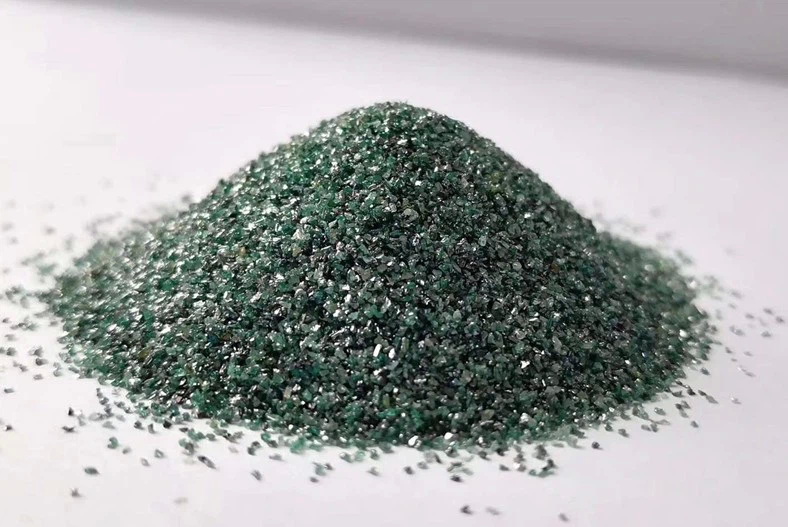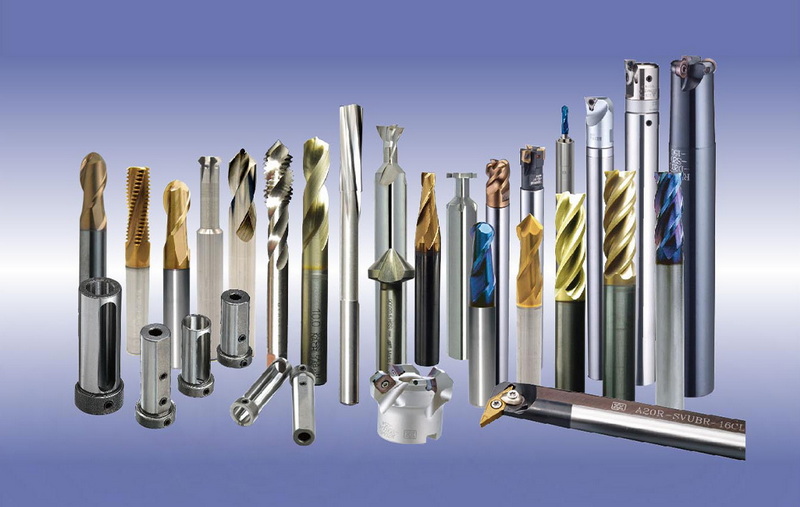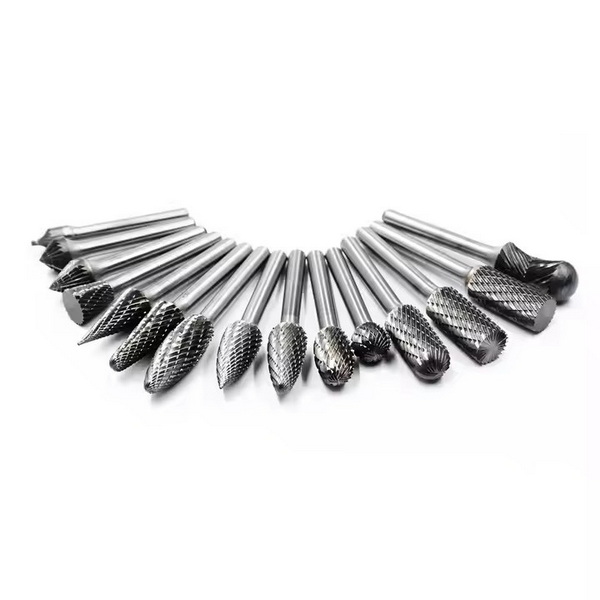Content Menu
● Introduction
● Material Composition and Structure
>> Silicon Carbide (SiC)
>> Tungsten Carbide (WC)
● Physical Properties Comparison
● Mechanical Properties
>> Hardness and Wear Resistance
>> Toughness and Fracture Resistance
● Chemical Properties
>> Corrosion Resistance
>> Oxidation Resistance
● Thermal Properties
● Manufacturing Processes
>> Silicon Carbide
>> Tungsten Carbide
● Environmental and Safety Considerations
>> Silicon Carbide
>> Tungsten Carbide
● Applications: Where Each Excels
>> Silicon Carbide
>> Tungsten Carbide
● Cost Considerations
● How to Choose: Key Decision Factors
● Conclusion
● FAQ
>> 1. What are the main differences in chemical resistance between silicon carbide and tungsten carbide?
>> 2. Which material is better for high-temperature applications?
>> 3. Is tungsten carbide tougher than silicon carbide?
>> 4. Why is silicon carbide preferred in chemical processing industries?
>> 5. Which material is more cost-effective in the long run?
● Citations:
Silicon carbide (SiC) and tungsten carbide (WC) are two of the most advanced engineering materials used in high-performance applications, particularly in mechanical seals, cutting tools, wear-resistant components, and industrial machinery. Both materials are renowned for their exceptional hardness, durability, and resistance to wear, but they differ significantly in their physical, chemical, and mechanical properties. Understanding these differences is crucial for selecting the right material for your specific application.

Introduction
Silicon carbide and tungsten carbide are often mentioned together because of their use in similar industrial environments. However, their unique characteristics mean they are not interchangeable. This article explores their differences in detail, providing visual aids and real-world examples to help you make informed decisions.
Material Composition and Structure
Silicon Carbide (SiC)
- Composition: Compound of silicon and carbon.
- Structure: Crystalline ceramic with strong covalent bonds.
- Nature: Non-oxide ceramic, highly crystalline, and extremely hard.
Tungsten Carbide (WC)
- Composition: Alloy of tungsten and carbon, often cemented with cobalt or nickel.
- Structure: Metal matrix composite, dense and tough.
- Nature: Considered a ceramic-metal (cermet), combining metallic toughness with ceramic hardness.
Physical Properties Comparison
| Property | Silicon Carbide (SiC) | Tungsten Carbide (WC) |
| Hardness (Mohs) | 9.0–9.5 | 8.5–9.0 |
| Density (g/cm³) | 3.0–3.2 | 15.6–15.8 |
| Color | Black/green | Gray metallic |
| Melting Point (°C) | ~2730 | ~2870 |
| Thermal Conductivity (W/m·K) | 120–170 | 84–110 |
Mechanical Properties
Hardness and Wear Resistance
- Silicon Carbide: Extremely hard and resistant to abrasion, making it ideal for high-wear environments. Its hardness is second only to diamond among commonly used materials.
- Tungsten Carbide: Also very hard, but slightly less so than SiC. However, it is much tougher and less brittle, providing better resistance to impact and deformation.
Toughness and Fracture Resistance
- SiC: More brittle, with lower fracture toughness. It can crack under high impact or shock loads.
- WC: Much tougher, with higher fracture toughness, making it more suitable for heavy-duty and impact-prone applications.
Chemical Properties
Corrosion Resistance
- Silicon Carbide: Chemically inert, with excellent resistance to acids, bases, and most chemicals. Ideal for corrosive environments.
- Tungsten Carbide: Good corrosion resistance, but can be vulnerable to strong acids and oxidizing environments, especially due to the cobalt binder. Protective coatings may be needed in aggressive chemical settings.
Oxidation Resistance
- SiC: Superior oxidation resistance at high temperatures.
- WC: Susceptible to oxidation at elevated temperatures, especially above 500°C.
Thermal Properties
| Property | Silicon Carbide (SiC) | Tungsten Carbide (WC) |
| Max Operating Temp (°C) | Up to 1600 | Up to 1000 |
| Thermal Conductivity | 120–170 W/m·K | 84–110 W/m·K |
| Thermal Expansion | 4.0–4.5 µm/m·K | 5.4 µm/m·K |
- SiC: Handles higher temperatures and dissipates heat more efficiently, reducing thermal stress and deformation.
- WC: Good thermal performance but less suited for extreme heat or rapid temperature changes.
Manufacturing Processes
Silicon Carbide
Silicon carbide is typically produced through the Acheson process, which involves heating silica sand and carbon to temperatures above 2000°C in an electric furnace. The resulting SiC crystals are then crushed and processed into various forms, such as powders, grains, or sintered shapes. Advanced techniques like chemical vapor deposition (CVD) are also used to create high-purity SiC for electronics and specialized components.
- Sintering: Used to form dense, complex shapes for mechanical seals and wear parts.
- CVD/Hot Pressing: For high-precision, high-purity applications.
Tungsten Carbide
Tungsten carbide is made by combining tungsten powder with carbon at high temperatures to form WC powder. This powder is then mixed with a metallic binder (usually cobalt or nickel) and pressed into shape. The compacted form is sintered at temperatures around 1400–1600°C, resulting in a dense, hard material.
- Powder Metallurgy: Enables production of complex geometries.
- Binder Selection: The choice and amount of binder affect toughness, hardness, and corrosion resistance.

Environmental and Safety Considerations
Silicon Carbide
- Environmental Impact: SiC production is energy-intensive but does not involve toxic metals.
- Safety: Inert and non-toxic in solid form, but dust from grinding or machining should be controlled to prevent respiratory issues.
Tungsten Carbide
- Environmental Impact: Mining and refining tungsten can have significant environmental effects. The use of cobalt as a binder is also a concern due to its toxicity and environmental persistence.
- Safety: WC dust can be hazardous if inhaled, and cobalt exposure is a known health risk. Proper ventilation and personal protective equipment are essential during manufacturing and machining.
Applications: Where Each Excels
Silicon Carbide
Best For:
- High-temperature environments
- Highly abrasive and corrosive media
- Chemical processing, slurry pumps, mechanical seals in aggressive fluids, semiconductor manufacturing
- Power electronics (as a semiconductor material)
- Limitations: Brittle and less suitable for high-impact or extreme pressure scenarios.
Tungsten Carbide
Best For:
- Heavy-duty, high-pressure, and impact-prone applications
- Mining tools, cutting tools, industrial machinery, wear-resistant coatings
- Armor-piercing ammunition, surgical instruments, and jewelry
- Limitations: Less resistant to chemical corrosion and high temperatures compared to SiC.
Cost Considerations
- Tungsten Carbide: Generally more affordable upfront, making it attractive for cost-sensitive, high-volume applications. However, maintenance costs may be higher if chemical or thermal resistance is inadequate for the environment.
- Silicon Carbide: Higher initial cost, but potentially lower total cost of ownership in demanding environments due to longer service life and reduced maintenance needs.
Factors Affecting Cost:
- Raw Materials: Tungsten and cobalt prices can be volatile due to geopolitical and supply chain factors.
- Processing Complexity: SiC's advanced processing methods (e.g., CVD, hot pressing) can add to costs.
- Lifecycle: SiC may last longer in harsh environments, offsetting higher upfront investment.
How to Choose: Key Decision Factors
1. Environment: If the application involves corrosive chemicals or high temperatures, SiC is preferable.
2. Pressure and Impact: For high-pressure or impact-prone situations, WC is more suitable.
3. Wear and Abrasion: Both materials perform well, but SiC has the edge in highly abrasive and corrosive conditions.
4. Budget: WC offers lower upfront cost, SiC may offer savings over the product lifecycle in harsh environments.
5. Weight: SiC is much lighter, which can be advantageous in weight-sensitive designs.
6. Precision Requirements: SiC is available in extremely high-purity grades for electronics, while WC is preferred for mechanical strength.
Conclusion
Silicon carbide and tungsten carbide are both exceptional materials, each excelling in different environments and applications. Silicon carbide stands out for its superior hardness, thermal conductivity, and chemical resistance, making it the go-to choice for high-temperature, corrosive, and abrasive conditions. Tungsten carbide, on the other hand, offers unmatched toughness, density, and impact resistance, making it indispensable in heavy-duty, high-pressure, and impact-prone applications.
The choice between SiC and WC should be guided by the specific demands of your application—considering factors like temperature, pressure, chemical exposure, abrasion, and cost. By understanding the unique strengths and limitations of each material, you can optimize performance, longevity, and cost-effectiveness in your engineering solutions.

FAQ
1. What are the main differences in chemical resistance between silicon carbide and tungsten carbide?
Silicon carbide is highly resistant to most chemicals, including strong acids and bases, making it ideal for corrosive environments. Tungsten carbide offers good chemical resistance but can degrade in the presence of strong acids or oxidizing agents, particularly due to its cobalt binder.
2. Which material is better for high-temperature applications?
Silicon carbide is superior for high-temperature applications due to its higher thermal conductivity and ability to withstand temperatures up to 1600°C, whereas tungsten carbide is typically limited to around 1000°C before oxidation becomes a concern.
3. Is tungsten carbide tougher than silicon carbide?
Yes, tungsten carbide is much tougher and less brittle than silicon carbide. This makes it better suited for applications involving high impact, shock loads, or heavy-duty mechanical stress.
4. Why is silicon carbide preferred in chemical processing industries?
Silicon carbide's chemical inertness, high hardness, and excellent thermal conductivity make it ideal for pumps, seals, and components exposed to aggressive chemicals and abrasive slurries in chemical processing plants.
5. Which material is more cost-effective in the long run?
While tungsten carbide is generally cheaper upfront, silicon carbide can offer a lower total cost of ownership in harsh environments due to its longer service life and reduced maintenance needs. The best choice depends on the specific operating conditions and cost priorities.
Citations:
[1] https://www.mechanicalsealindia.com/silicon-carbide-and-tungsten-carbide-mechanical-seal.html
[2] https://ggsceramic.com/news-item/silicon-carbide-vs-tungsten-carbide-in-wear-applications
[3] https://shop.machinemfg.com/the-pros-and-cons-of-tungsten-carbide-a-comprehensive-guide/
[4] https://www.syalons.com/2024/07/08/silicon-carbide-vs-tungsten-carbide-wear-applications/
[5] https://www.makeitfrom.com/compare/Silicon-Carbide-SiC/Tungsten-Carbide-WC
[6] https://www.victor-seals.com/news/what-is-the-difference-between-silicon-carbide-and-tungsten-carbide-mechanical-seals/
[7] https://ggsceramic.com/news-item/tungsten-carbide-vs-silicon-carbide-differences-explained
[8] https://cowseal.com/silicon-carbide-vs-tungsten-carbide-mechanical-seal/
[9] https://www.makeitfrom.com/compare/ESD-Safe-Silicon-Carbide/Tungsten-Carbide-WC
[10] https://www.refractorymetal.org/what-are-the-important-applications-of-silicon-carbide.html
[11] https://www.innovacera.com/news/the-advantages-and-disadvantages-of-silicon-carbide.html
[12] https://www.qmseals.com/differences-between-silicon-carbide-and-tungsten-carbide-mechanical-seals
[13] https://www.mdpi.com/1996-1944/15/6/2061
[14] https://pmc.ncbi.nlm.nih.gov/articles/PMC8953363/
[15] https://leakpack.com/silicon-carbide-vs-tungsten-carbide-mechanical-seal/
[16] https://carbosystem.com/en/silicon-carbide-properties-applications/
[17] https://www.linkedin.com/pulse/what-best-silicon-carbide-wear-face-material-my-mechanical-winnie-xu
[18] https://www.meccanotecnica.us.com/blog/582/silicon-carbide-and-tungsten-carbide-mechanical-seals-a-guide
[19] https://moatcity.com/blog-kiln-furniture/the-main-advantages-and-disadvantages-of-silicon-carbide-saggars/
[20] http://www.wococarbide.com/Uploads/2017-09-28/59cc5a321343b.pdf















